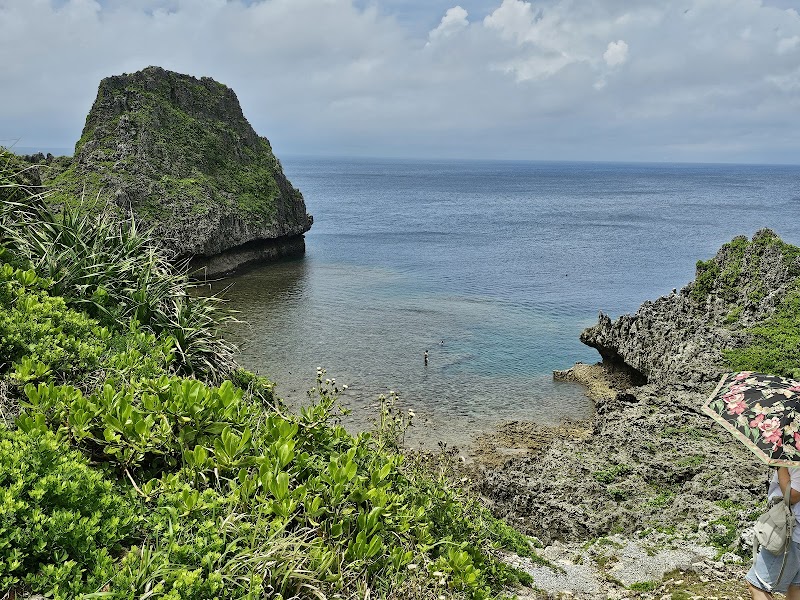
Year-Round Pottery Workshops and Vibrant Markets in Yomitan, Okinawa
Immerse yourself in Yomitan’s unique pottery culture with hands-on workshops and vibrant local markets open all year. Discover authentic Okinawan clay artistry and lively community gatherings that blend crafting with lively island life.
Book Workshops in Advance
Pottery sessions can fill up quickly, especially on weekends—reserve your spot early to ensure participation.
Wear Comfortable, Easy-to-Clean Clothing
Clay can be messy; dressing in clothes you don’t mind getting stained will keep the experience hassle-free.
Arrive Early for Markets
Vendors often bring their best wares early in the day, so arriving before noon provides the most choice.
Stay Hydrated and Use Sun Protection
Workshops and markets mostly take place outdoors under Okinawa’s strong sun—bring water and sunscreen.
Year-Round Pottery Workshops and Vibrant Markets in Yomitan, Okinawa
Yomitan, a village carved into the western coast of Okinawa, extends an invitation to both creators and explorers to engage with a deeply rooted craft tradition—pottery. Known for Yachimun (Okinawan pottery), this area offers hands-on workshops where clay seems ready to answer your touch, shaping into unique vessels that echo the island's natural textures and colors. Whether you’re a casual visitor or an aspiring potter, year-round workshops provide a practical gateway to connect with local artisans and Okinawa’s earth.
Workshops are conveniently scattered around the village, typically lasting from a couple of hours to a full day, depending on your level of interest and skill. Sessions often begin with an introduction to the signature Okinawa clay, sourced nearby, whose rough texture and warm hues hint at the island’s distinct geology. Participants work at wheel or hand-build with guidance from masters who balance tradition with accommodating beginners.
Beyond workshops, Yomitan’s weekend markets pulse with life, offering locally-made pots alongside fresh produce, textiles, and street food. These markets aren’t just shopping venues; they are lively gatherings where craft meets community. The scent of sea breeze merges with roasted Okinawan sweet potatoes and earth-dusted pottery wares displayed under vibrant tents. Vendors share stories as openly as their handmade goods, inviting buyers to appreciate the labor and lore behind each piece.
For visitors, timing is crucial. Morning workshops beat the Okinawan midday heat, while markets tend to thrive from late morning through mid-afternoon. The roads and small paths weaving through Yomitan’s craft villages are easy to navigate on foot or by bike, and parking is usually available near major studios and market spaces. For those planning a longer stay, accommodations in nearby Ginowan or Naha provide practical bases with easy access to Yomitan’s workshops.
Expect a sensory encounter—the cool touch of damp clay, the rhythmic hum of potter’s wheels, the tactile grain of surfaces shaped under skilled hands. Nature here remains a quietly assertive presence; the sea winds push conversations and flies alike, and ancient stone walls hold the village’s pottery secrets safe. It's a hands-on opportunity to understand Okinawa’s cultural fabric and the elemental forces that fashion its enduring arts.
Whether crafting your first mug or hunting for a perfect handmade souvenir, Yomitan’s pottery workshops and markets offer adventure beyond the ordinary—a practical dive into local life where creativity and tradition shape unforgettable experiences.
Nearby Trips
All Adventures
Boat Charters
Water Activities
Adventures near Yomitan, Okinawa
Discover the unique and memorable adventures that make Yomitan, Okinawa special.
Frequently Asked Questions
Can beginners participate in pottery workshops?
Absolutely. Most workshops in Yomitan cater to beginners, providing step-by-step instruction and all necessary materials. Experienced potters lead the sessions to adapt to different skill levels.
Are pottery workshops available year-round?
Yes, workshops run throughout the year. While outdoor markets may slow during winter, indoor pottery classes remain accessible even in the cooler months.
Is it easy to transport pottery back home from Yomitan?
Pottery is fragile, but most studios provide packing materials or tips. Consider buying smaller, lighter items if flying, and pack carefully in cushioned layers.
Do pottery workshops offer opportunities to create traditional Okinawan styles?
Yes, workshops emphasize Yachimun techniques, introducing traditional glazing and firing methods distinctive to Okinawan pottery.
Are the markets cash-only or do vendors accept cards?
Most vendors prefer cash, but some larger stalls may accept electronic payments. It's best to carry Yen to avoid missing out.
What languages are spoken in workshops?
While most local potters speak primarily Japanese, many offer basic English explanations or visual demonstrations. Booking with an English-speaking guide can enhance the experience.
Recommended Gear
Comfortable Clothing
Light, breathable fabrics protect against heat and allow freedom of movement during clay work.
Sun Hat and Sunscreen
Necessary to shield from Okinawa’s strong sunlight when markets and workshops take place outdoors.
Water Bottle
Stay hydrated, especially during outdoor market visits and summer workshops.
Plastic Bag or Container
Useful for transporting your finished pottery pieces safely without damage.
Local Insights
Hidden Gems
- "Quiet pottery studios along the less-traveled roads of Yomitan’s central area"
- "Small community-run markets showcasing rarely seen ceramic tools and handmade local brushes"
Wildlife
- "Colorful Okinawan bullfinches flit near workshop gardens"
- "Occasional sightings of native geckos on shelter walls"
History
"Yachimun pottery reflects Okinawa’s Ryukyu Kingdom heritage, blending indigenous craft with influences from China and Southeast Asia over centuries."
